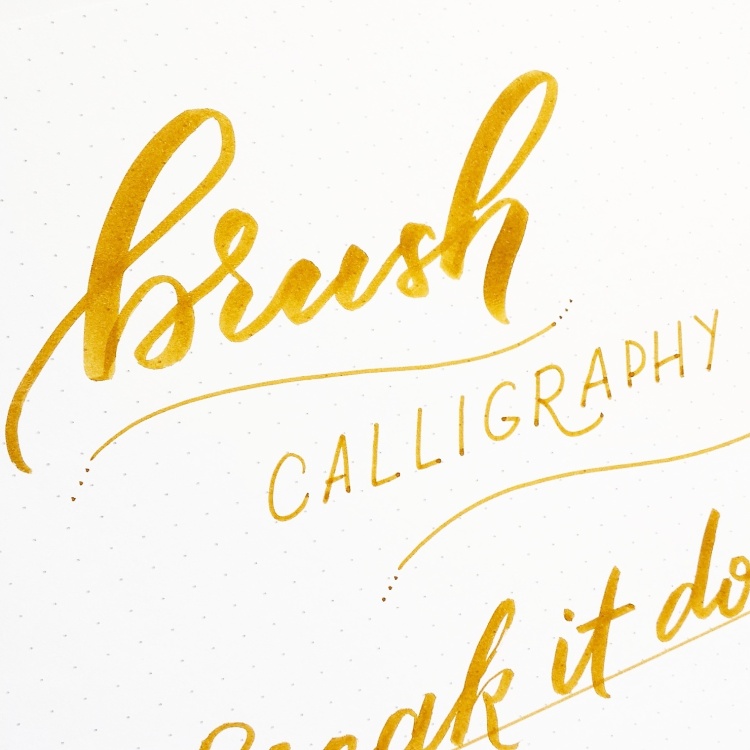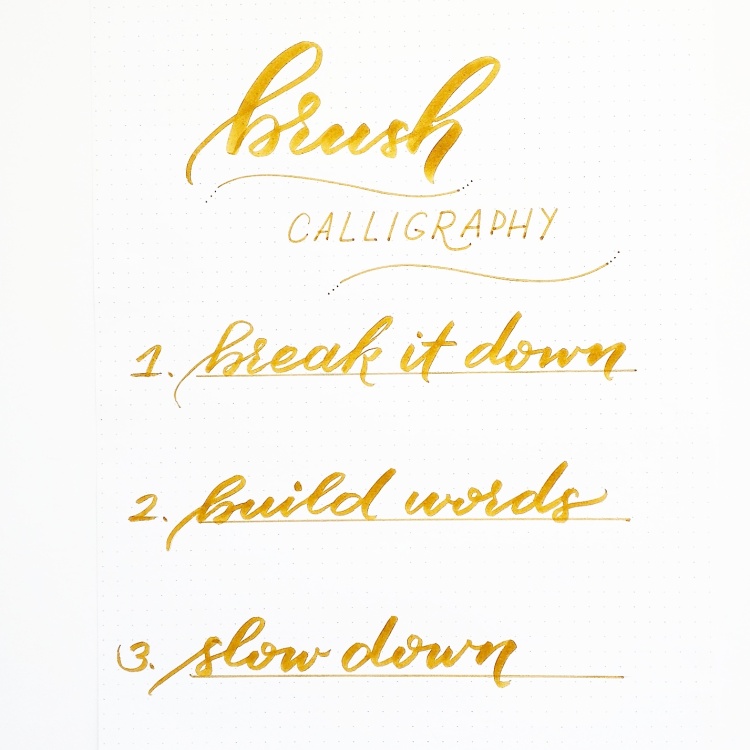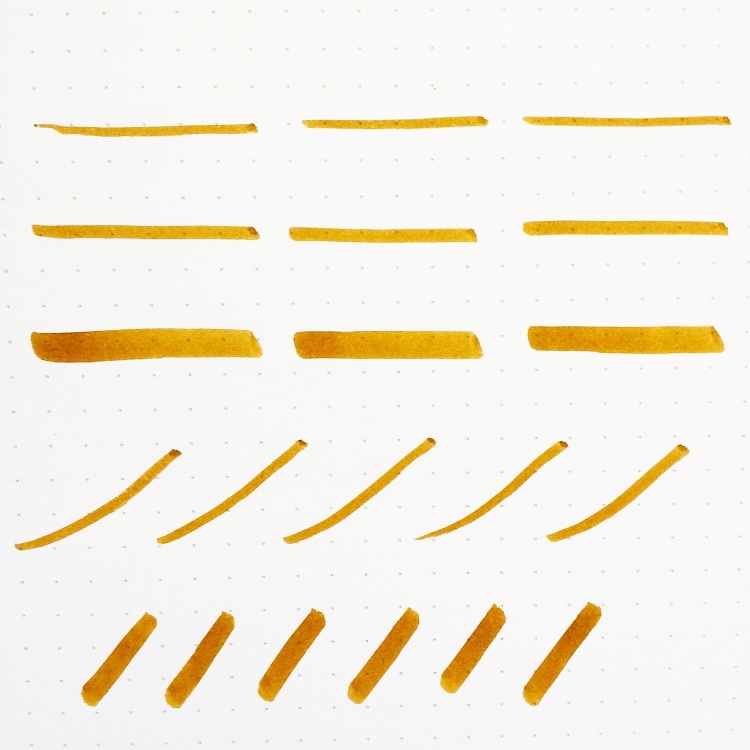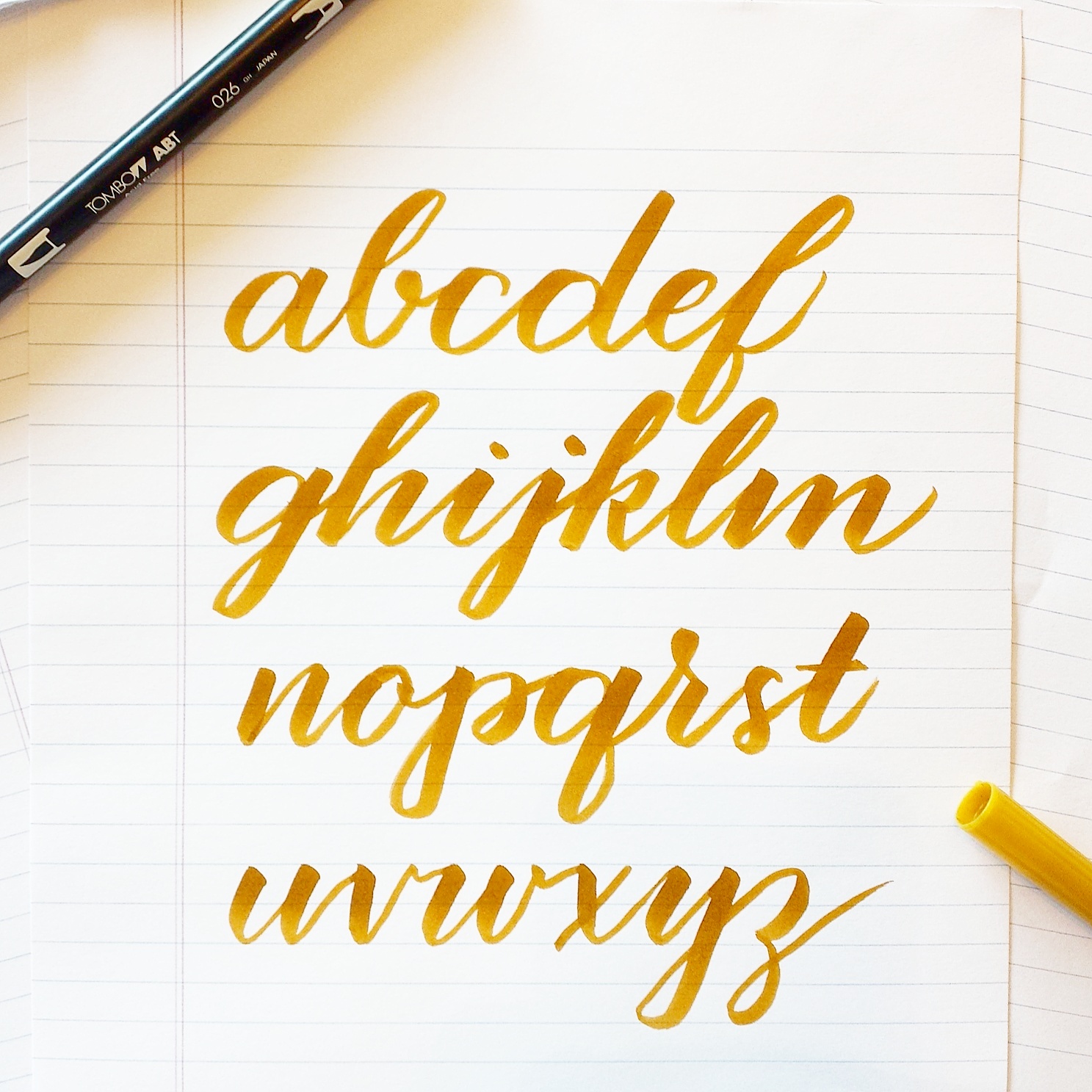The brush pen has quickly become my new favorite tool for writing calligraphy.
The ink is already there, the flexible tip allows me to achieve the varying thick and thin strokes, and I can carry the pen with me everywhere!

In response to requests for tips on improving with brush calligraphy, I thought of the top three things that I consistently tell folks: break it down, build the words, and slow down.

1. Break it down.
Every letter can be broken down into single strokes.
Practice simple strokes like these over and over again to increase your writing consistency.
There are more strokes than these that I’ll share in the future. But these are basic ones that I actually use myself when I first get a new pen and want to take it for a “test write.”

2. Build the words.
Don’t start writing phrases, don’t even write words! Just take it letter by letter and see how each letter is built with some of the strokes I demonstrate above.

Take it one letter at a time. Start with any letter!
Just pick one and fill a PAGE with that letter. Discover what it takes to build that letter, how the strokes connect.
If you’re too anxious like me, go ahead and write the whole alphabet. Then you have my permission to write words.

3. Slow down.
Melissa’s advice in her online calligraphy class will always stick with me: “Slow is smooth and smooth is fast.”
She’s right.
We’re a generation that craves instant gratification. We want it now. We see it and want to do it.
But it’s so worth it to slow down and take your time. You will eventually be able to write smoothly and without thinking too hard about which strokes to connect, and when to lift your pen.

That’s all she wrote! (Pun intended. Told you I love puns.)
Need more?
Check out this guide to brush pens by Melissa, and this detailed and informative brush pen tutorial by Lindsey!
~ ~ ~
It’s your turn!
What did you find most helpful about this post?
What do you want to see explained in more detail?
~ ~ ~
P.S. If you liked this post, I’d love if you would share it!
P. P. S. Be sure you are subscribed to my blog below so you don’t miss a post!


Very nice! 🙂
LikeLike
Thanks much!
LikeLike
Loved this!! Thank you for sharing with us. My BIGGEST problem is going to fast. 🙂
LikeLike
You’re so welcome! Yes – I am guilty of rushing more than I would like to admit, even to this day!
LikeLike
Thanks for the tips. My problem is I can’t relax when I try to make it perfect the first time. I love paper and ink so much I don’t want to waste. Hahaha.
LikeLike
You’re so welcome! Oh, I truly love trees. I do. But I waste a ton!!! You should see my recycle bin…
LikeLike
Thank you for this. This will help me a lot. I went ahead and bought more Tombow pens and Pentel Sign Pen. Tried them yesterday and had so much fun! You’re right; it is easier to use especially to beginners like me.
LikeLike
So glad to hear, Ish! Happy writing!
LikeLike
Love this post and all your work. Love your generous spirit and your natural gift for teaching! I’m teaching a lettering workshop in LA in July and will definitely mention you as an incredible resource for my students!
LikeLike
Hey girl! Thank you so so so much! I really appreciate that! Can’t wait to hear how your workshop goes! Let me know if there’s anything else I can do for you! 🙂
LikeLike
Thank you! I’m just embarking on my lettering journey! ha ha So helpful!
LikeLike
Hooray!!! Enjoy the journey. Let me know what specific things you may need help on!
LikeLike
Love your site!
LikeLike
Thank you and thanks for stopping by!
LikeLike
Awesome !! 👍😊
LikeLike
Thanks! 🙂 🙂
LikeLike
I adore your tutorials and all of the wonderful resources you share. I’ve been so inspired and encouraged as I read and admire your work. One struggle that I continue to have is when I have an arc that goes to the left and down – think lower case a, g, d, etc. I feel like I’m pushing my Tombow backwards and it’s going to fray! Is there a solution or is this normal? Thanks so much for your insight.
LikeLike
Hi Amber! It takes some getting used to that counterclockwise movement, especially with Tombow dual brush pens being so flexible. Focus on the angle you are holding the pen, and the pressure you exert. Remember: Thin up (and across), thick down.
If you haven’t yet had a chance, head over to my “Learn” page that contains some tutorials on holding the pen in the right angle/direction to prevent fraying. Let me know how it goes!
LikeLike
This is such helpful advice. You are awesome! I like how you mentioned building letters and not trying to jump right to writing phrases (which is exactly what I was doing.)
LikeLike
Yes, Kayla! I am guilty all the time of rushing and not wanting to spend time practicing and breaking down my letters stroke by stroke. But try to be diligent and do so – it will pay off!
LikeLike